B-Day is here! That is, Blood Collection Day.
At the UTAS Medical Science Precinct, we are fortunate to have experienced phlebotomists on site to undertake the blood collection process.
Blood Collection
We started the collection process at around 9:30am. My first vein (left) was difficult to find, even with the use of a fancy vein illumination machine. However, my second arm (right) had a good vein for blood collection resulting in a 5mL sample for processing.
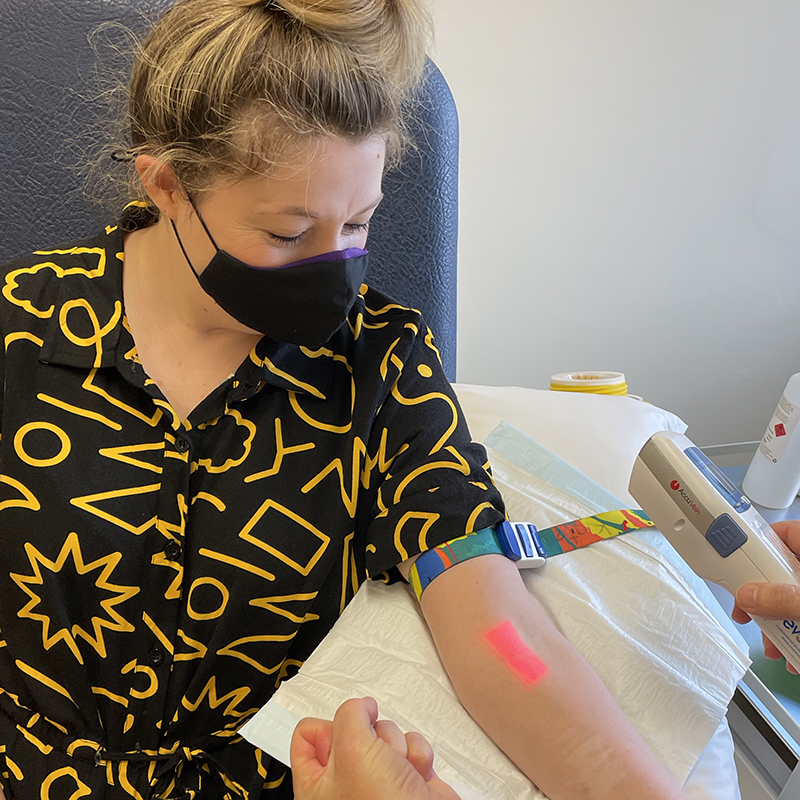
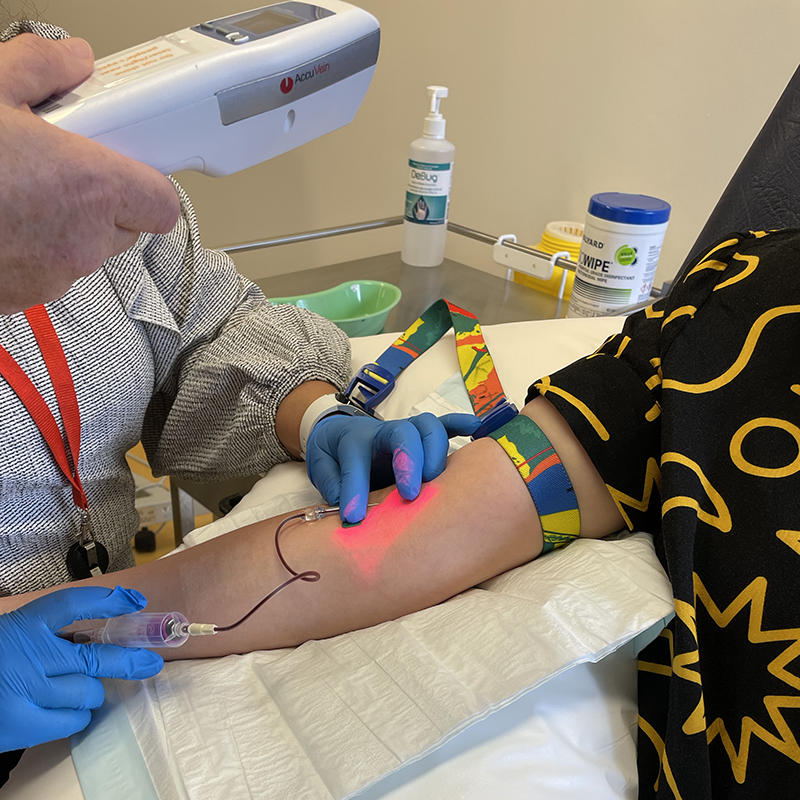
PBMC isolation
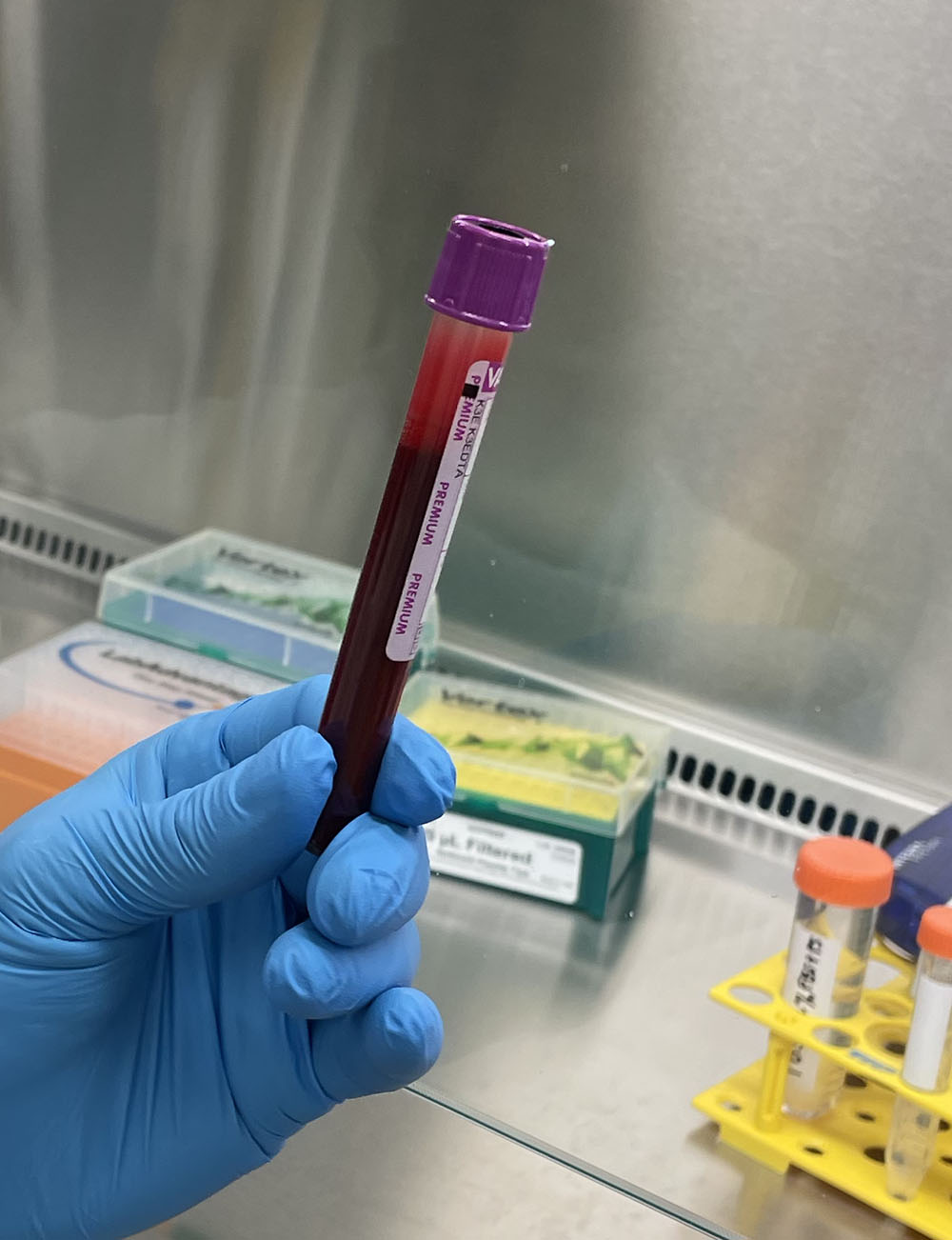
We transferred the blood to the lab and processed the sample straight away to obtain PBMCs.
The first step involved diluting the blood sample with PBS (saline solution) to make it less viscous. This was then gently added to a tube containing Ficoll solution to form a clear layer of blood over the medium.
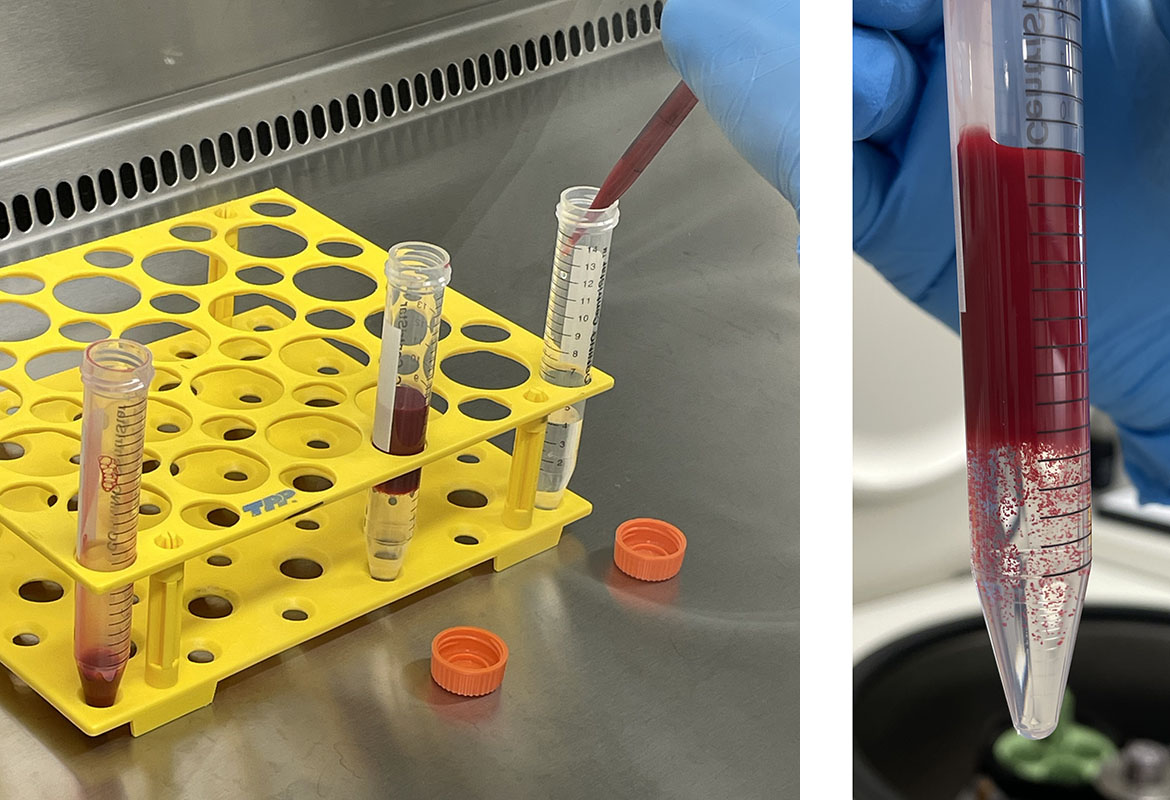
The tubes were then spun in the centrifuge for around 40 minutes which separates cell types and plasma in the sample.
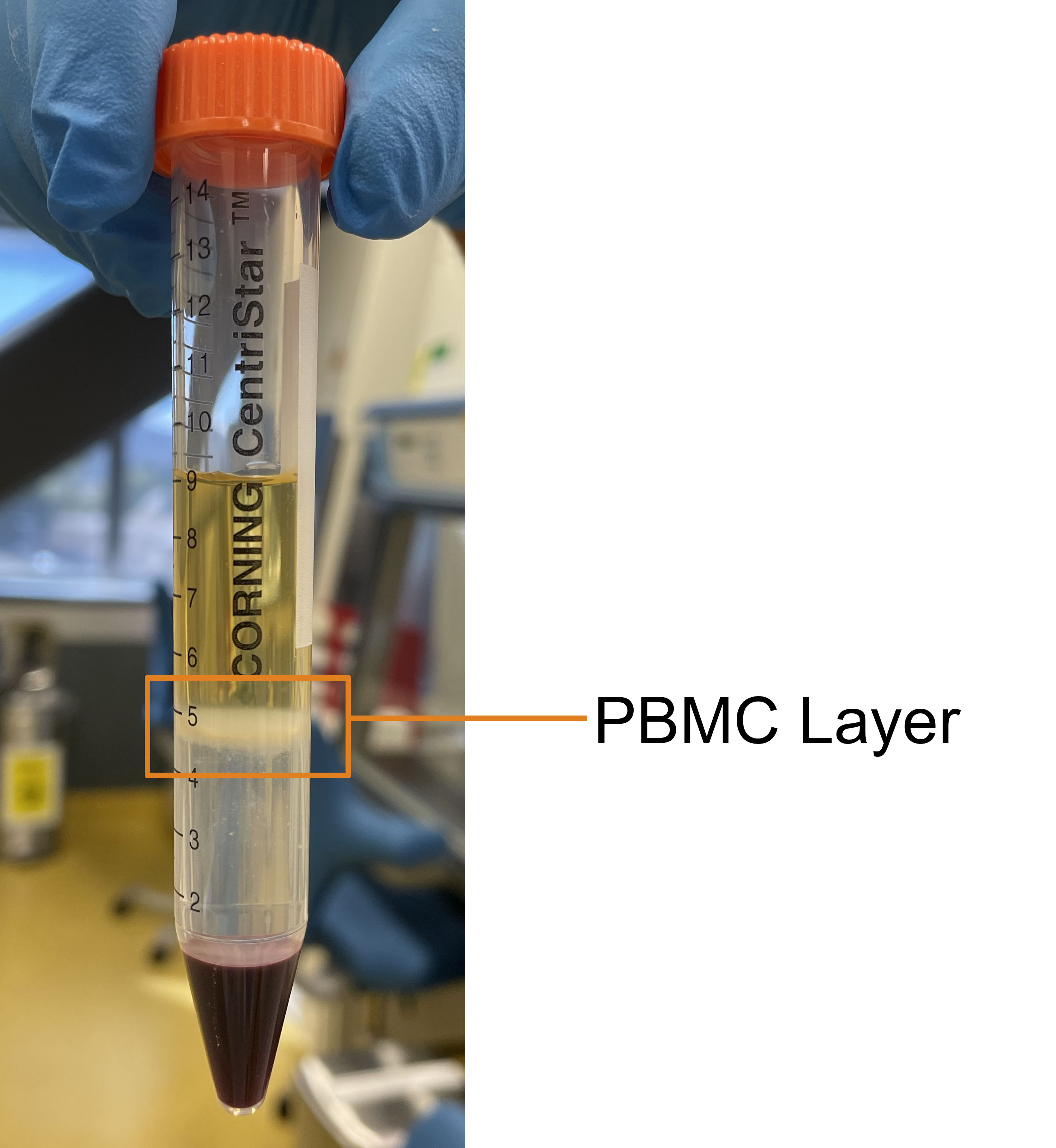
Following centrifugation, the PBMC layer was removed and washed resulting in a small pellet of PBMC cells.
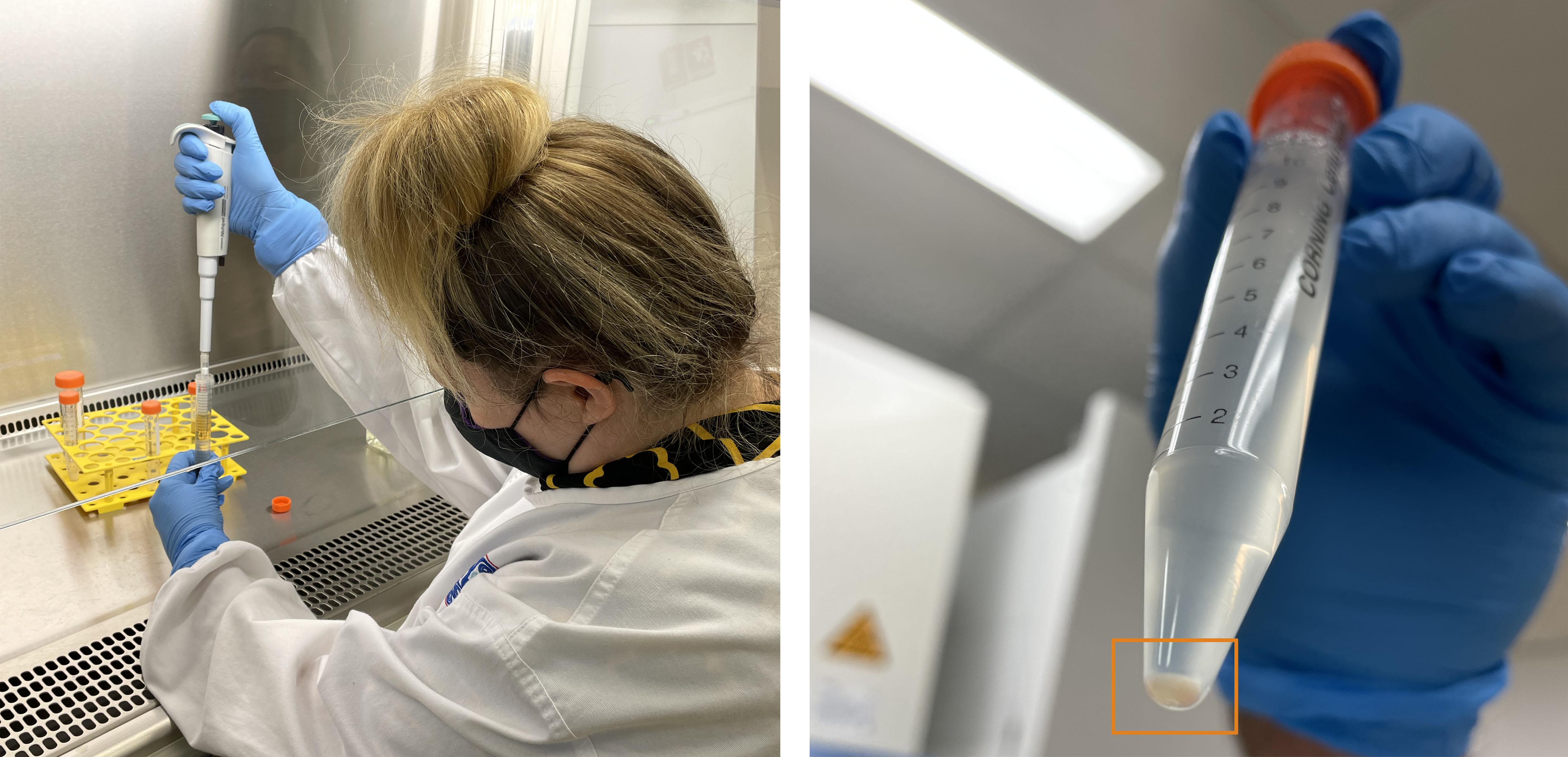
The pellet was resuspended in media and a cell count performed to determine the number of viable cells.
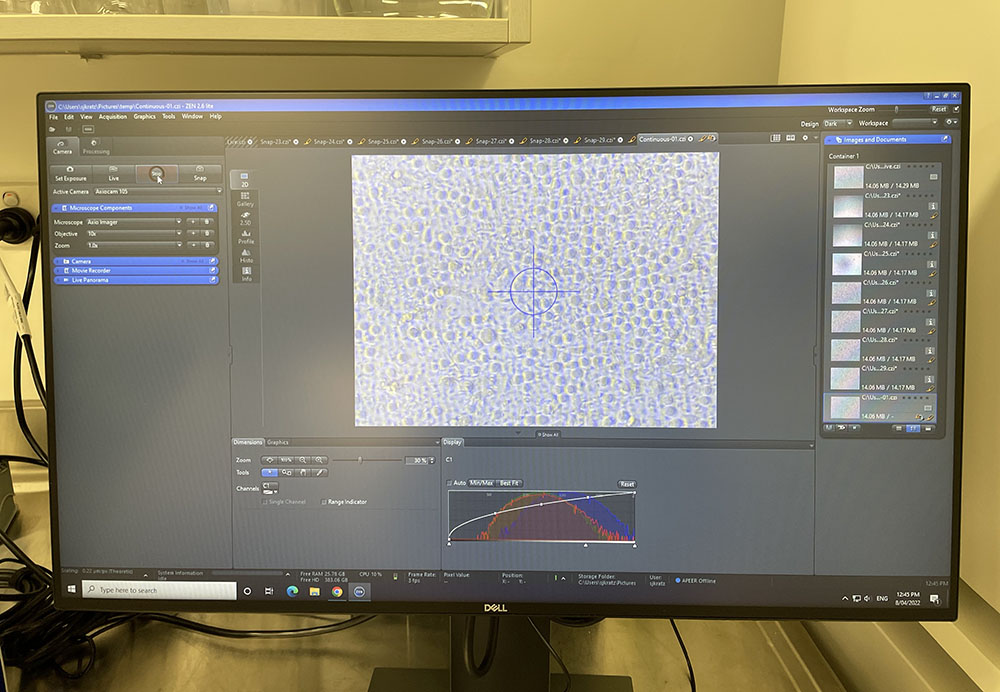
Following a cell count (using the automatic cell counter), there were around 5 million cells per mL in suspension.
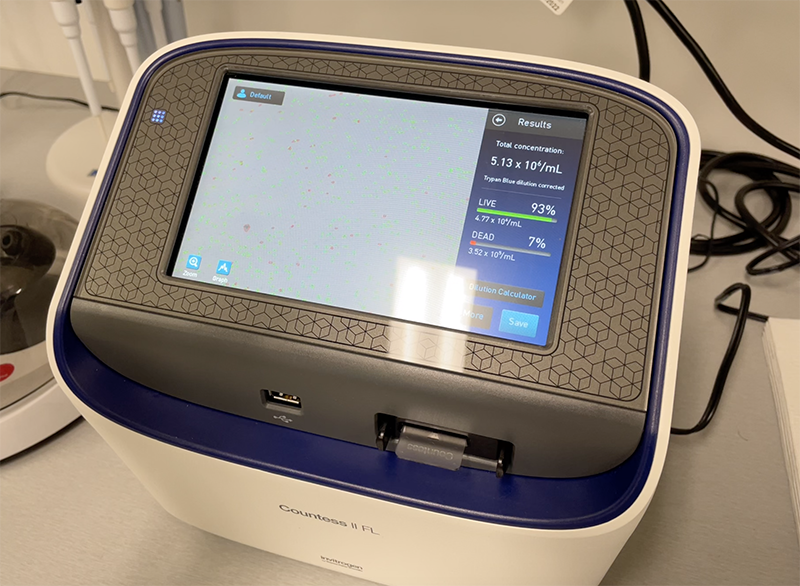
Ash advised that we only need 500, 000 cells for the reprogramming (so around 100μl).
As such, we added100μl cell mix to 0.5mL media a well in a 48 culture plate.
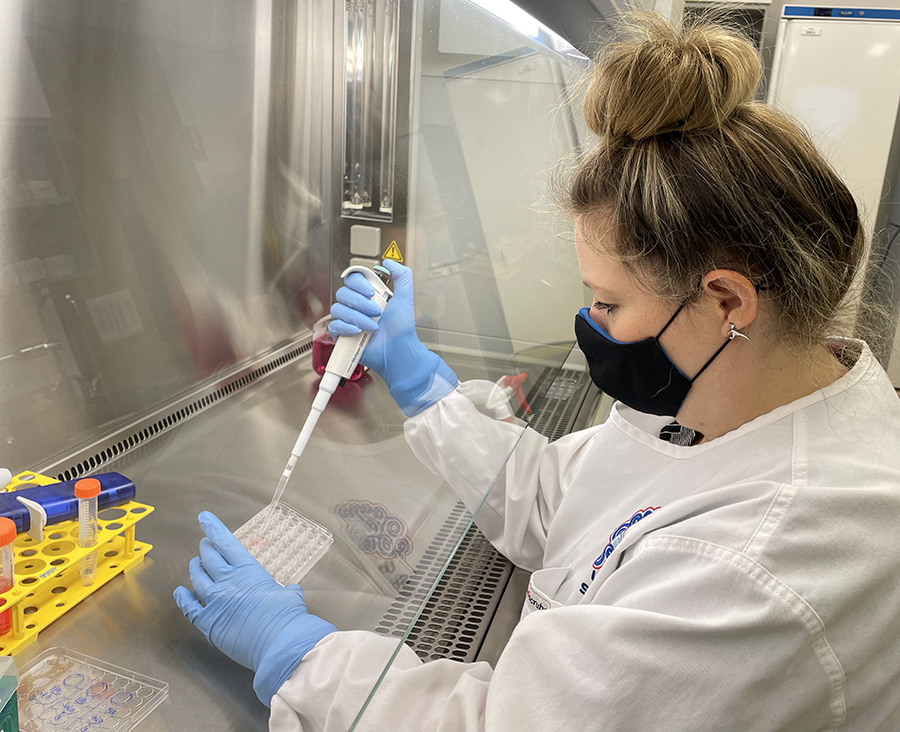
The remaining cells were resuspended in 2mL freeze media, aliquoted into two cryo-vessels (1mL each), and placed in a Mr Frosty Box (freezing container) in the – 70 freezer. They need to be transferred to liquid nitrogen in 24 hours. These frozen cell stocks operate as quality control and as a backup in case there is an issue with the reprogramming protocol (or lab mishap). Fingers crossed for a smooth journey to iPSC babies.
